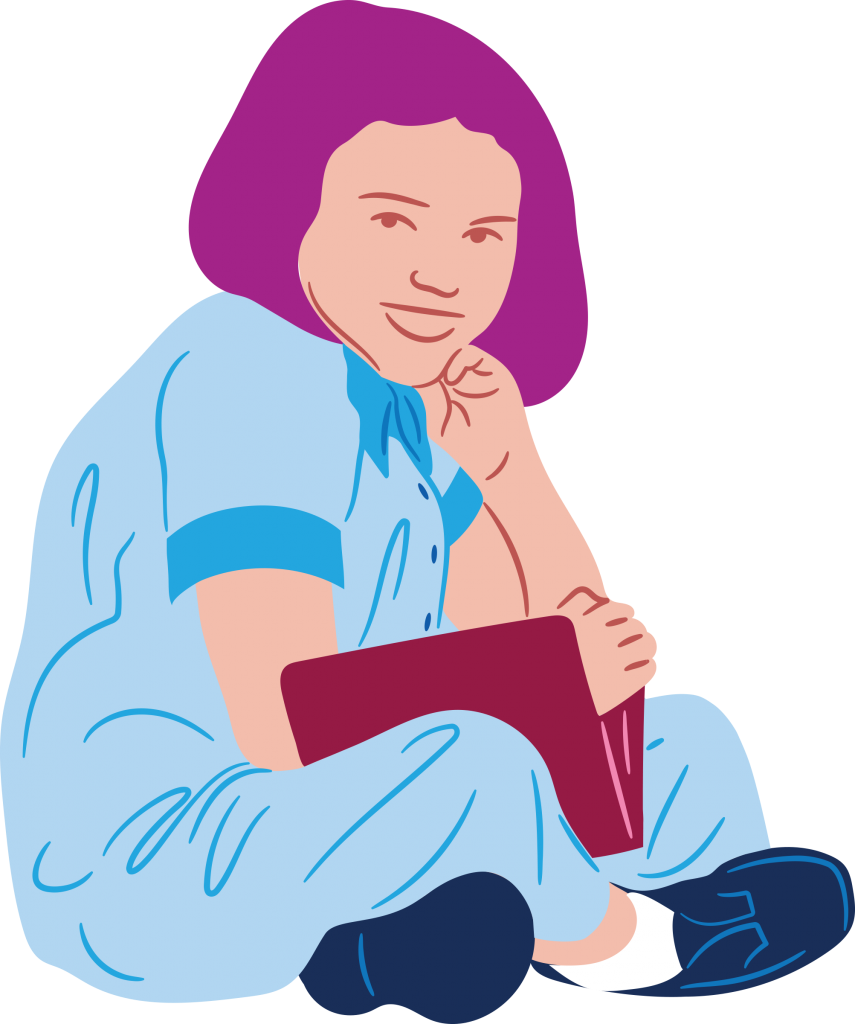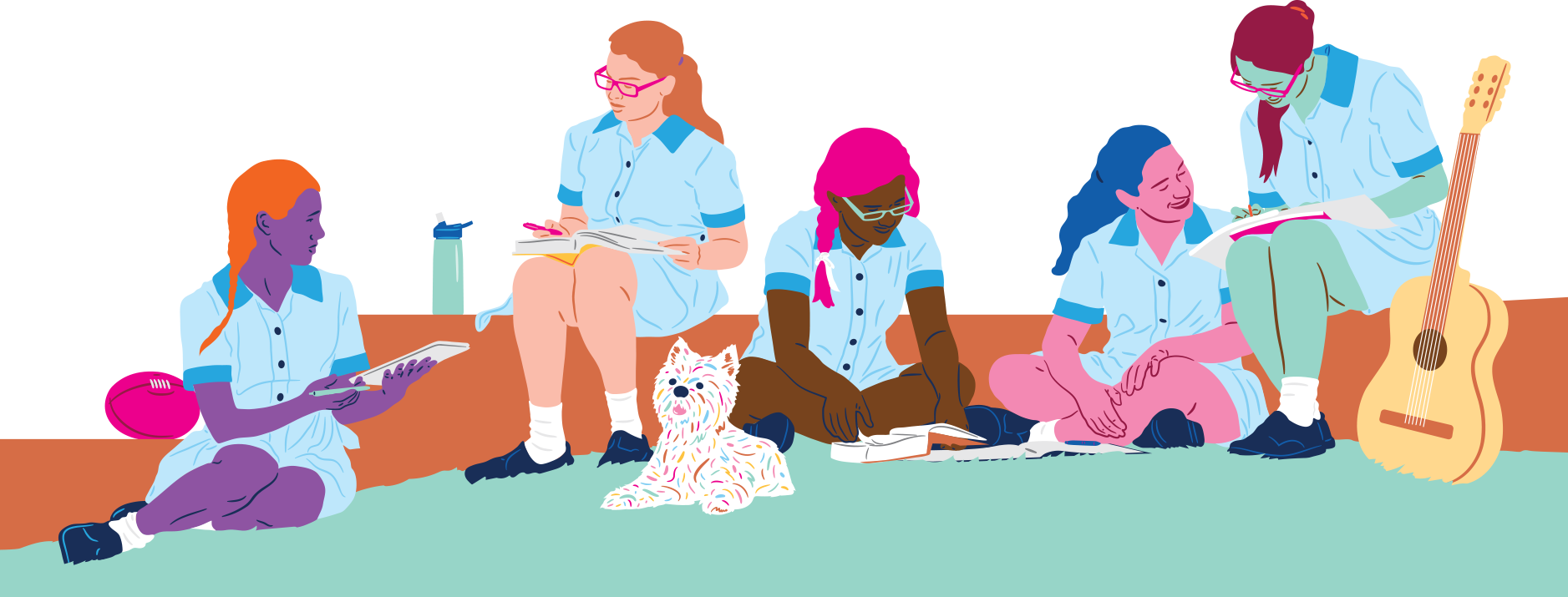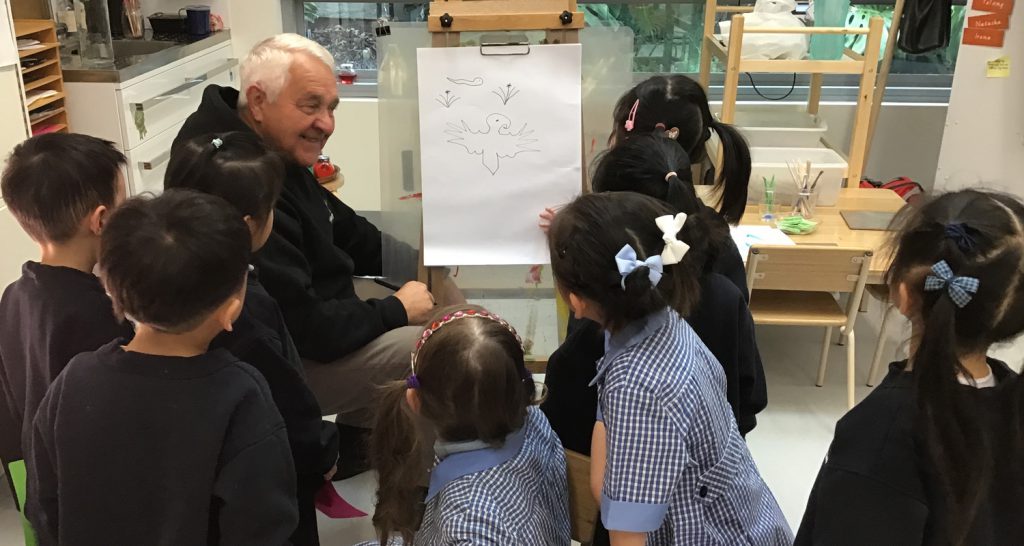
At the end of last term, it was a pleasure to attend our second Speech and Drama Moorfield Maestros event for the year. Once again, each of the performances were of a high standard and each of the students enjoyed the opportunity to perform in front of their families. A big ‘Thank You’ to Aleksis Payne for organising the event and working closely with the students in helping them create their own stories and scripts. Congratulations to the following students:
Alice L
Ada L
Likka J
Isla K
Angela W
Amiya R
Kenolee H
Emma A
Ailey P
Aurelia P
Amelia A
Chloe Z
Shreya S
Alice X
Hanna L
Aryana P
Khusshnaaz K
Lily K
Isabelle G
Akira R
Selinna W
Claire Z
Running, sprinting, jumping and throwing continue to be important physical activity skills that are taught and constantly practiced in our weekly physical education lessons, especially in Foundation, Year 1 and Year 2. In the last week of Term 3, each of the Foundation – Year 2 students had the opportunity to participate in a variety of track and field events that included a long-distance run, a 20-metre sprint, long jump, ball throw and relay race. It was a very successful carnival and we look forward to the Year 2 students being part of our Year 3 – 6 athletics carnival next year. I would like to thank our PE Teacher Kim James for organising the carnival and the parents who attended this annual event.
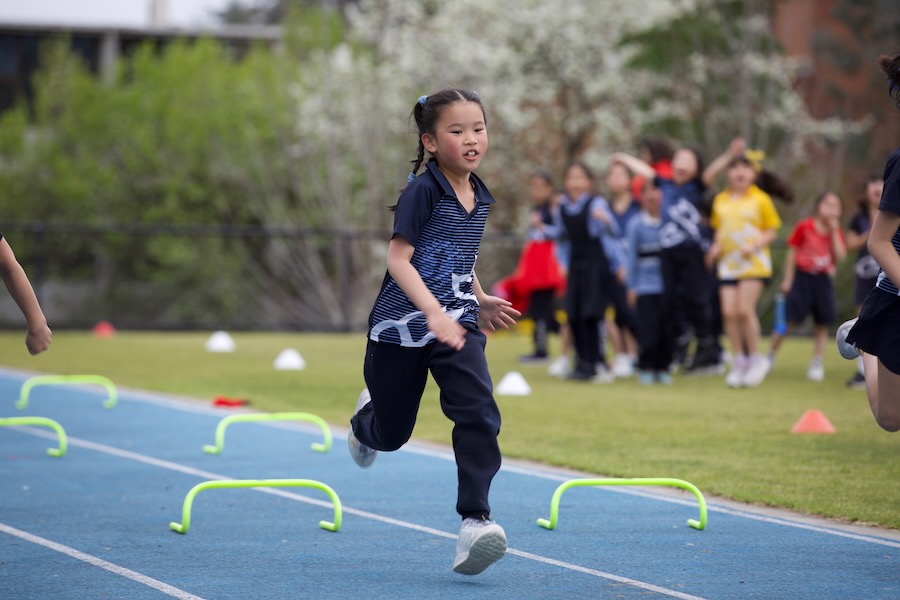

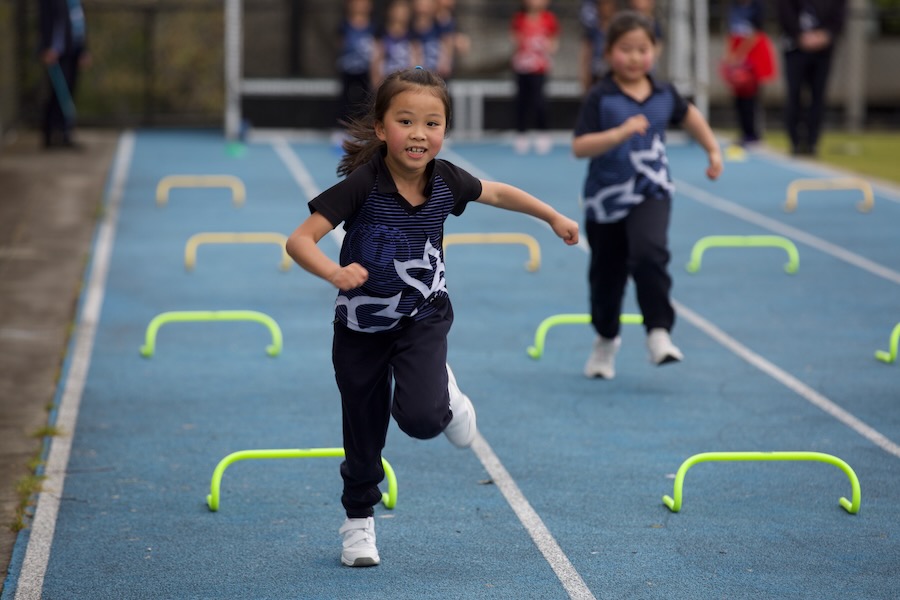
Recently, Olivia L from Year 3 entered the 2023 New York Station International Youth Art Competition and won a silver medal in the Australian division. There were only 20 other recipients who received a silver medal, and there were over 50,000 artworks submitted in total from over twenty countries. Congratulations to Olivia for her outstanding effort and wish her all the best with her future drawing and painting artworks.
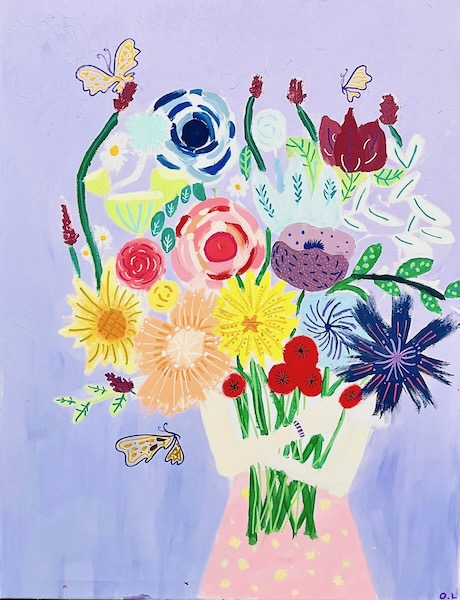
At this week’s Junior School Assembly, our Year 5G Class Teacher Craig Goodwin let Ormiston know that one of his students – Anshika A won a prize in a mapping competition called ‘How Cool is your School?’ The competition encouraged our Year 5 students to use satellite data to map the amount of green shade at Ormiston. Students were required to calculate the percentage of shade and create a map that meets cartographic (mapping) conventions. The maps the students created were then entered into the competition. Congratulations to Anshika for her highly detailed map of Ormiston and for winning a DJI Tello EDU drone.
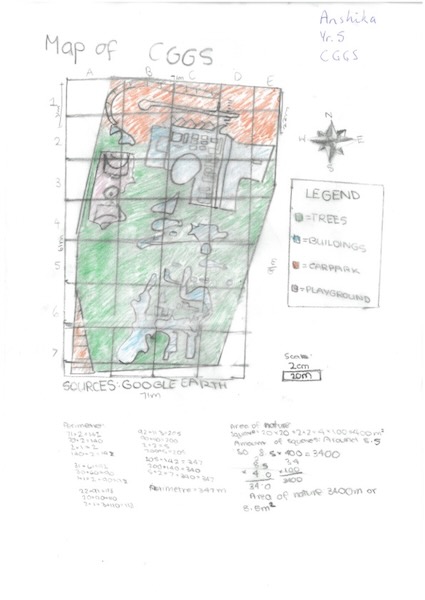
I hope all Ormiston families have a great weekend.
Regards,
Paul Donohue
Head of Junior School
Early Learning 3 children are currently immersed in a learning journey about the profound connection Aboriginal and Torres Strait Islander Peoples have with the land, sea, sky, plants, and animals. Unlike the conventional Gregorian calendar, which organises seasons by months, the Wurundjeri people have a unique approach. They define seasons based on the behaviours of animals, plants, weather, and constellations. This term, the children are continuing their exploration of the seven seasons of the Kulin Nation, focusing specifically on Poorneet, also known as Tadpole Season, occurring from September to October.
To deepen the children’s understanding of the Poorneet season, they are actively involved in an observational painting activity. This creative experience involves drawing and painting the blooming flowers that align with the current season, specifically focusing on the blossoming daisy plants. The children approach this task with great care and attention, taking ample time to observe and study the intricate details of the flowers before transferring their observations onto paper. This hands-on activity not only enhances their artistic skills but also connects them deeply with nature’s seasonal changes.
A visit from Murrundindi had him graciously sharing his knowledge about the Kulin Nation season calendar, engaging the students in an enriching conversation. Not only did he explain the intricacies of the calendar, but he also took the time to create drawings that visually represented the concepts. The children eagerly participated, making the learning experience even more interactive and memorable. Murrindindi’s visit added a tangible and personal dimension to their understanding, fostering a genuine appreciation for the rich cultural heritage of the Indigenous peoples and their profound connection to the natural world.
Melinda Murphy & Jacqui Laird
Early Learning 3 Teachers
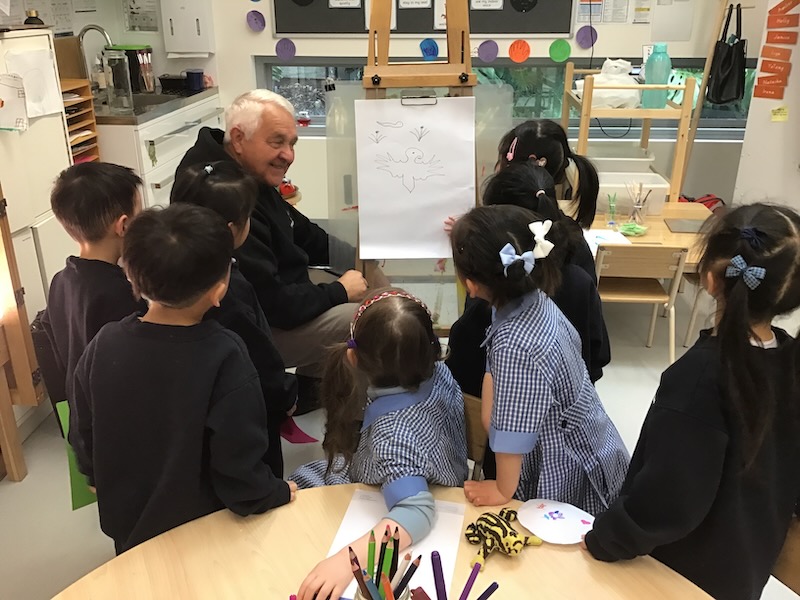
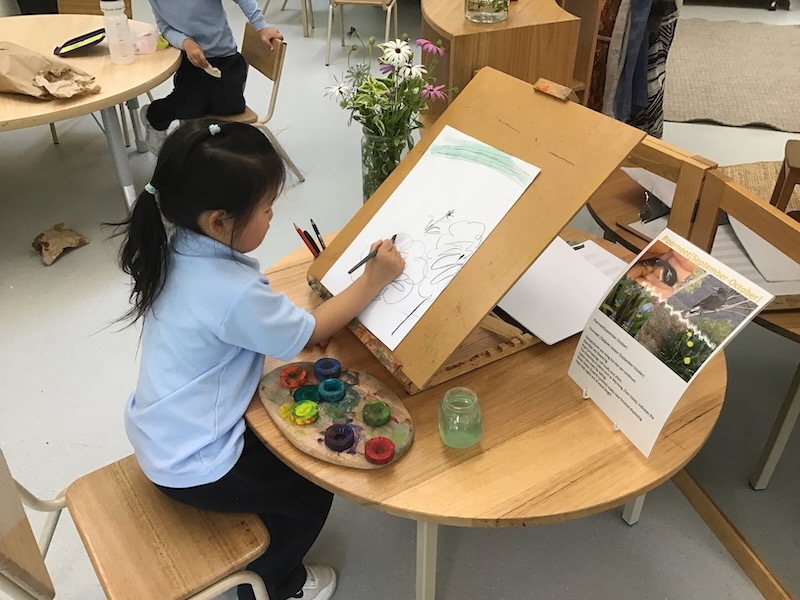
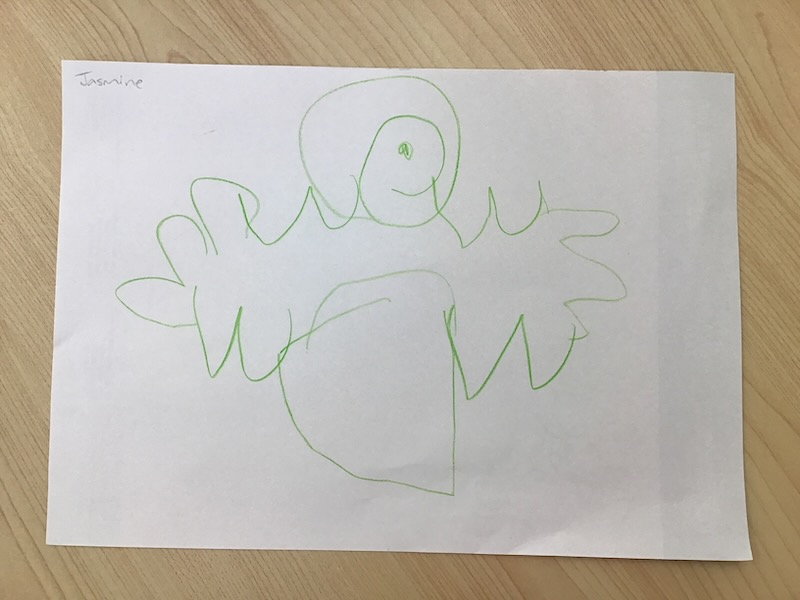
“If we listen from the mind of silence, every birdsong and every whispering of the pine branches in the wind will speak to us.” Thich Nhat Hanh
Each afternoon, we share a meditation story that provokes wonder and awe and guides children on a journey that explores a different life skill or value. As the children engage in guided meditation, they experience mindfulness, discover ways to relax their mind and body, develop breathing techniques, listening skills and self-regulation, and learn how to use visualisations and affirmations to experience a state of calmness.
During the meditation story, some children feel (kinaesthetic), some see an image, that is, pictures, colours, symbols (visual) and some learn from words or sounds (auditory). Each child’s experience is different based on how they learn and process information. The meditation stories incorporate all three learning styles so that each child can experience the meditation in a way that suits them while being given the opportunity to use all three methods. What can you see? What do you hear? How does it make you feel?
The meditation stories have affirmations that develop self-awareness and encourage children to have a belief in their potential. Some of the affirmations in the meditation stories have included; I am strong, I am grateful, I am confident, I am unique, and I love challenges.
During our meditation stories, we provide opportunities for times of silence. Silence encourages the children to stop, listen and ‘be’. Meditation provides a tranquil space that nurtures and cultivates inner calmness, peacefulness, and mental clarity, essential in combating the stresses of everyday life.
At the conclusion of the story, the children have time and opportunity to reflect as this helps to strengthen metacognition – thinking about their thinking and learning – and share their thinking and reflections with their peers.
Angela Follacchio
Early Learning 4 Teacher
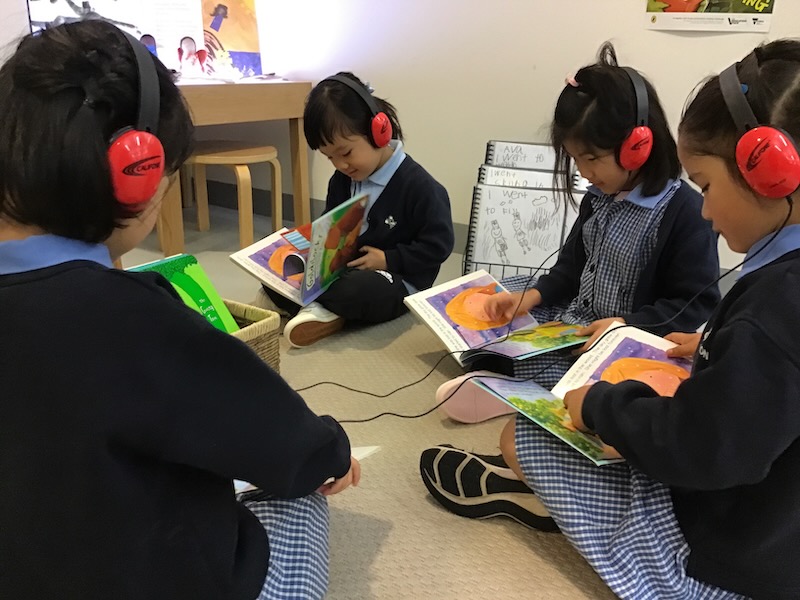

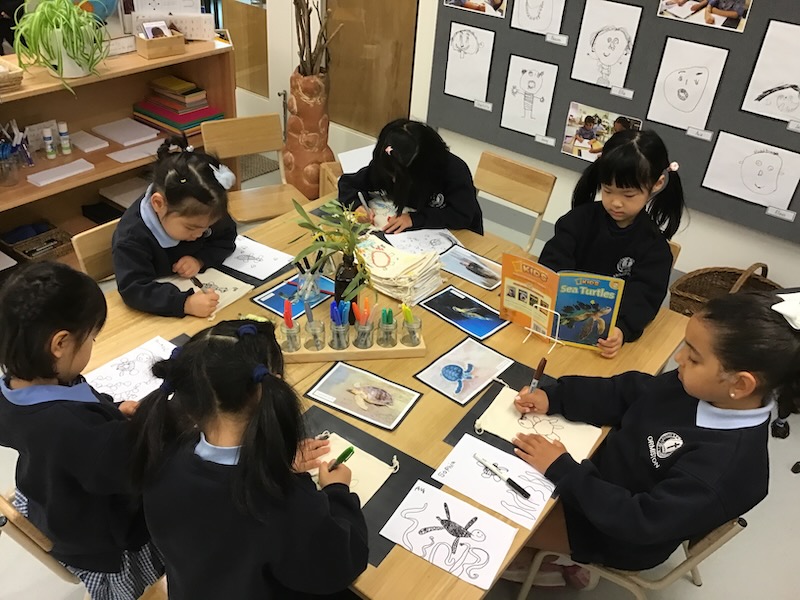
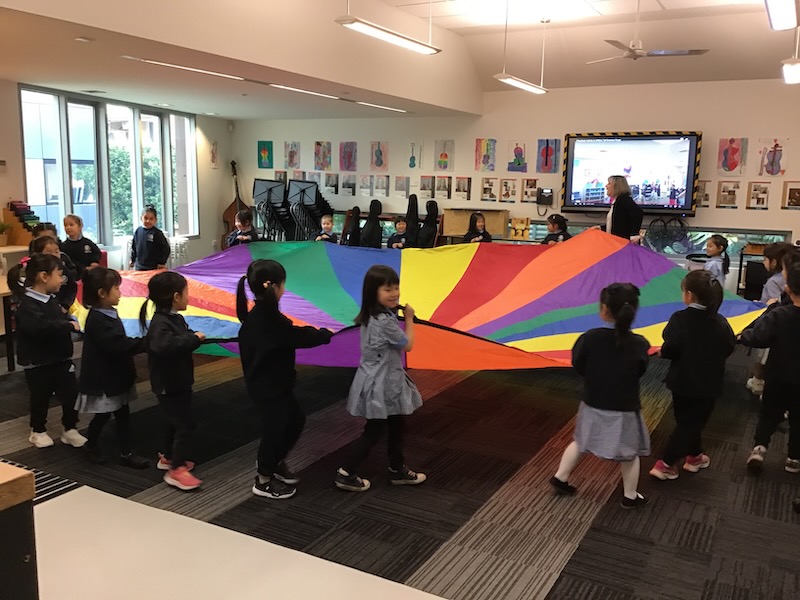
Children in the Early Learning 4 Part-Time classroom have been using linking cubes to inspire open-ended, spontaneous, and intentional play. Through this experience, children were prompted to engage their subitising (the ability to observe a group of objects and establish the sum without counting) and one-to-one correspondent counting – the ability to count by allocating a numeral to each object skills to the group, arrange, categories and instinctively engage with basic mathematical concepts.
These considered play interactions, support children to grasp fundamental concepts such as quantity, patterns, repetition, and spatial relationships. Play interactions that were observed, gave evidence that children continue to build foundations for their numeracy skills as they begin to incorporate simple addition and subtraction equations.
Whilst Miya and Chloe took a more stationary stance, their play cycle involved imaginary narratives, where the objective was to group and categorise blocks of similar amounts together and allocate a number hat, “they’re dancing on the rainbow road, the one hundred rainbow road” stated Miya, as each line represented 50 blocks in each. “The number people have to wear a hat because the number monster is going to eat them, but sometimes he’s very hungry and he will eat the big one and sometimes he is not very hungry, and he will only eat a little bit” explained Miya. “Some don’t have a number” identified Chloe, pointing to the blocks with numberless hats, “they don’t know how much, and they are lost, are looking for their number to join their family”.
Scarlett, Xavier, and Kiki took on a more practical approach, using the stacked blocks to measure items within the classroom, starting with the plants before moving on to the length and width of the classroom. “The room needs lots and lots of blocks to measure the room, like [4] hundreds exactly” commented Kiki before the play narrative altered, and children began using the blocks as seeds, and multiplying them accordingly (i.e., one seed became two, two became four, and so on).
As stated by Ann-Marie Dibiase an American researcher and educational psychologist, “mathematical experiences for very young children should build largely upon their play and the natural relationships between learning and life in their daily activities, interests, and questions.” Thus, supporting children to develop number sense, and grasp mathematical concepts in organic and authentic ways.
Esther Wong
Early Learning 4 Teacher & Early Learning Coordinator
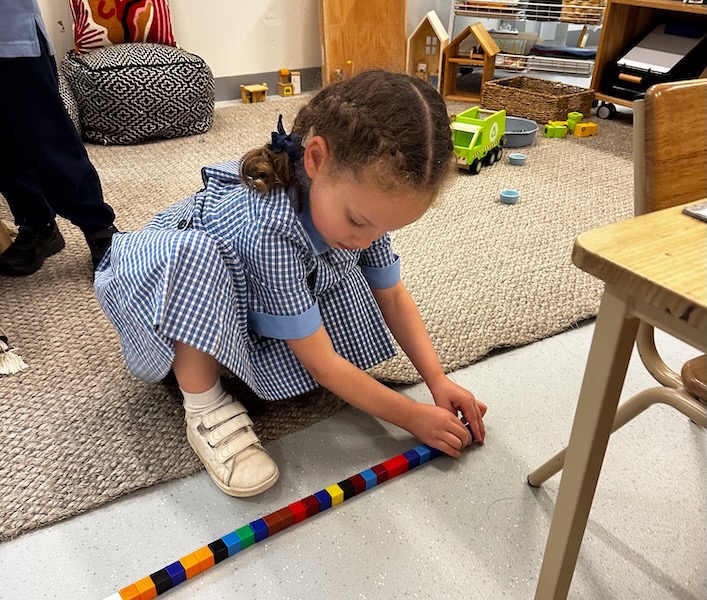

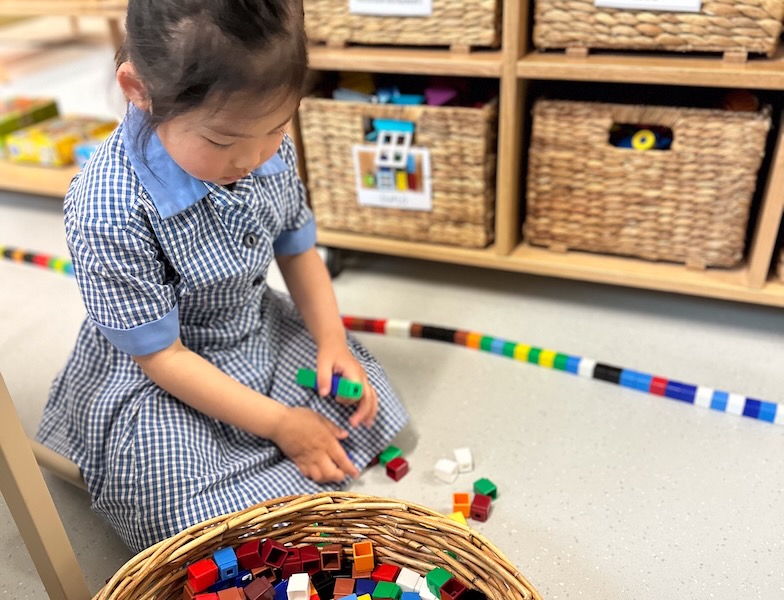
This year, four students from Ormiston took part in the 65th Victorian Interschools Snowsports Championships at Mt Buller. Nicole L in Year 3, Ivy X, Yiyi L and Stephanie L in Year 5 were wonderful ambassadors for Camberwell Girls Grammar School and demonstrated persistence and enthusiasm throughout the three days of competition. All students participated in the Alpine Giant Slalom and Ski Cross events. For the first time one student, Ivy X, also took part the Boarder Cross, Boarder Slalom and Ski Moguls disciplines.
Each student embraced the challenge of the racing format, and it was amazing to see their positivity and desire to achieve their personal best shine. Mrs. May and I were so proud of effort and attitude of every student. They were wonderful representatives for our school. We would like to sincerely thank the supportive families who also attended the event.
Ivy – The thing I loved most about Snowsports was having a try at moguls and snowboarding.
Yiyi – Snowsports was better this year than last year because I was definitely faster and stronger.
Stephanie – I loved Snowsports because it was fun going to the Opening Ceremony and competing against other schools.
Nicole – I really enjoyed going to the Opening Ceremony and seeing the fireworks. My favourite event was the Giant Slalom because I could go around the flags instead of across bumps and bends.
Angela Columbine
Year 1 Classroom Teacher

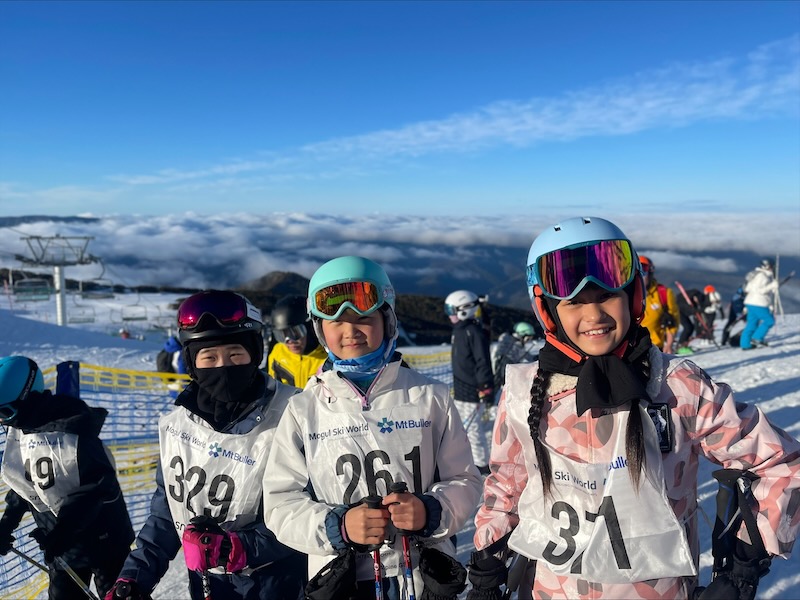

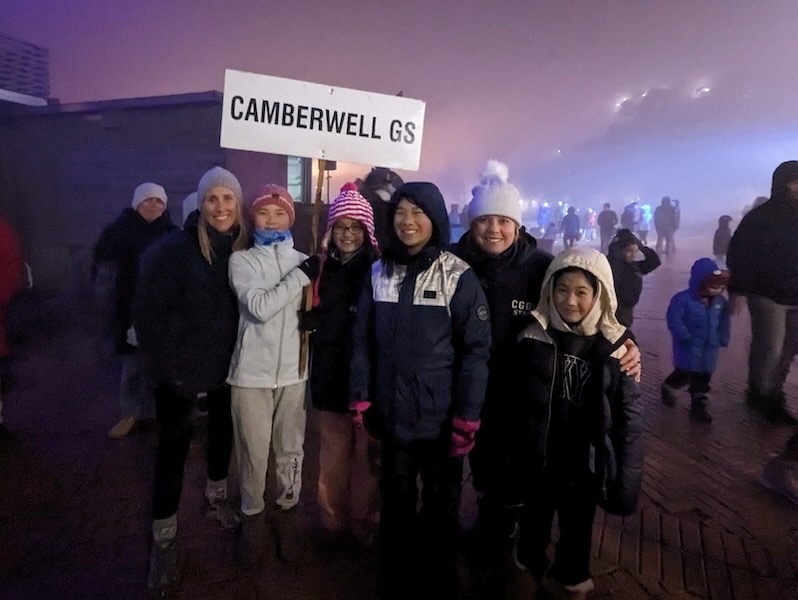
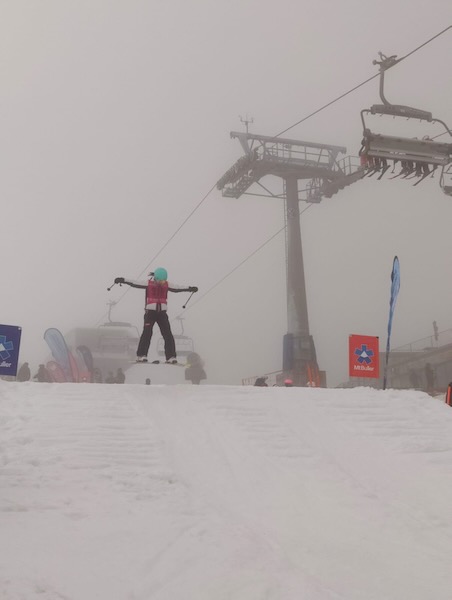
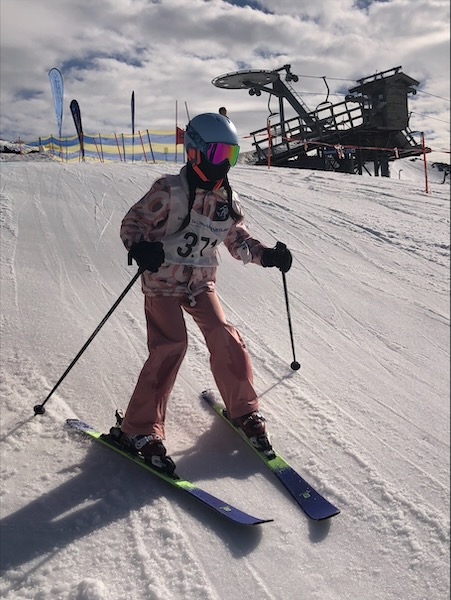
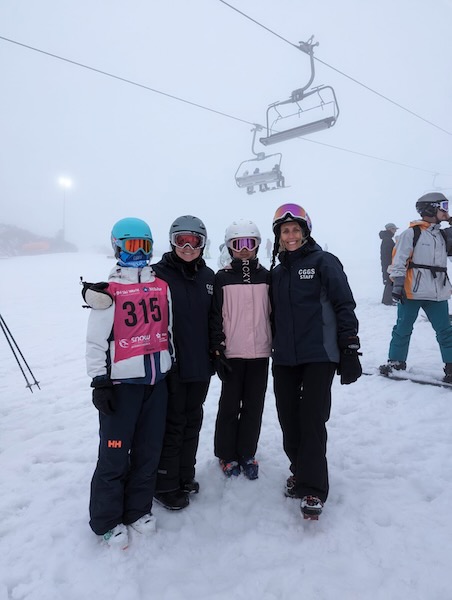
Following their exploration of how yarning circles have been used by Aboriginal and Torres Strait Island people for centuries to share knowledge, stories and build respectful relationships, Year 3 created their own yarning circle designs.
On the last day of Term 3 the students presented a booklet of their designs and a proposal to include a yarning circle here at Ormiston to Mrs Dunwoody and Mr Donohue.
Below is the covering letter we wrote:
Dear Mrs Dunwoody and Mr Donohue,
This term we have been learning about yarning circles as part of our exploration of ‘How can understanding connection to Country enhance our lives as Australians?’.
Yarning circles have been used by Aboriginal and Torres Strait Island people for centuries to share knowledge, stories and build respectful relationships. For First Nations people, the yarning circle was and still is an important place to conduct business, talk about issues in the community or on Country, and have a space where all voices are recognised and heard.
We investigated how being in a circle allows everyone to be seen and heard in a respectful way. We sat outside and observed everything around us, noticing how much we could see, smell and hear. By sitting outside we felt more connected to the environment and were able to effectively communicate with each other. We thought about possible places we could have a yarning circle at Ormiston and the pros and cons of each site.
Murrundindi visited us earlier in the term and taught us how a yarning circle works. We learnt that the leader of the circle must face south and that the person holding the yarning stick is the only person allowed to speak. We also learnt that you must never walk through a yarning circle, but instead you walk around the outside. Murrundindi gave us advice about where the best place for a yarning circle at Junior School would be. He suggested the site of where the ‘double sandpit’ is currently located. This spot has enough room for a whole class and is away from all the large trees. There are also native plants already in this area and it is at the centre (or heart) of our outdoor area.
Year 3 would love to have a Yarning Circle at Junior School. We think it is important to connect to Wurundjeri Country and show respect to the traditional custodians. It would be a place for classes to communicate effectively and learn about First Nations culture in a respectful way.
We have created yarning circle designs using the information we learnt and the advice we got from Murrundindi. We have included these designs for your consideration and hope that we can have a yarning circle created at Ormiston for all students and teachers to use.
Yours sincerely,
Year 3W
The Year 3 students worked very hard to transfer their knowledge of yarning circles to their designs and proposal. The pride they felt in their work was evident as they presented to booklet to our Principal and Head of Junior School. It was a fantastic way to conclude our Inquiry Unit at the end of term.
Elizabeth Warren
Year 3 Classroom Teacher
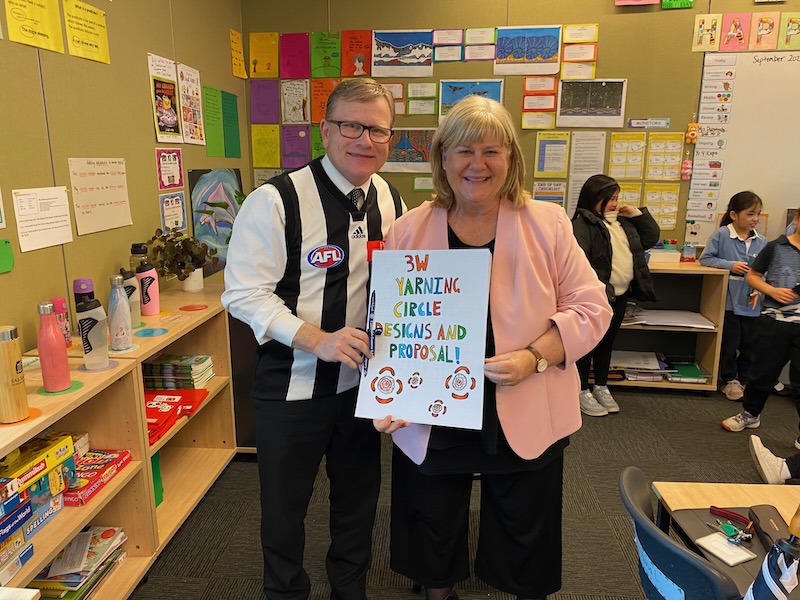
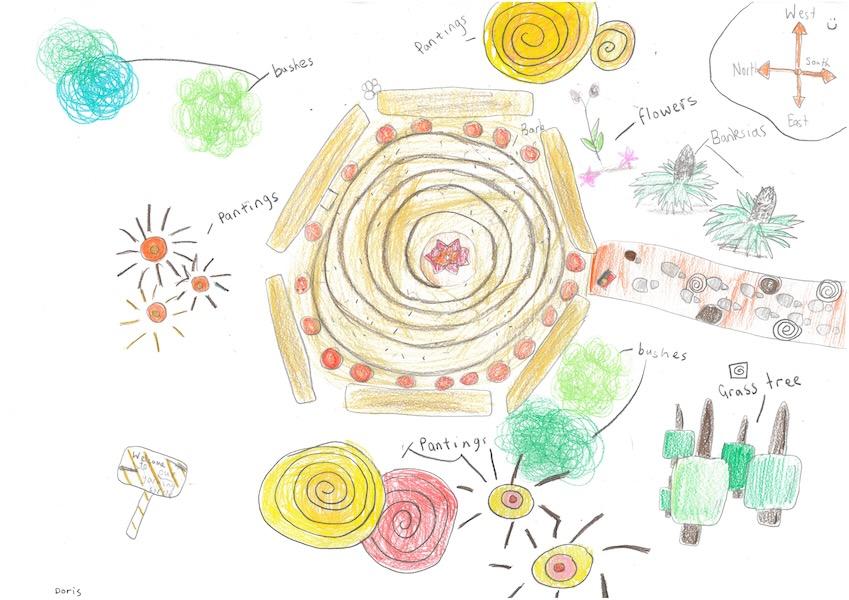
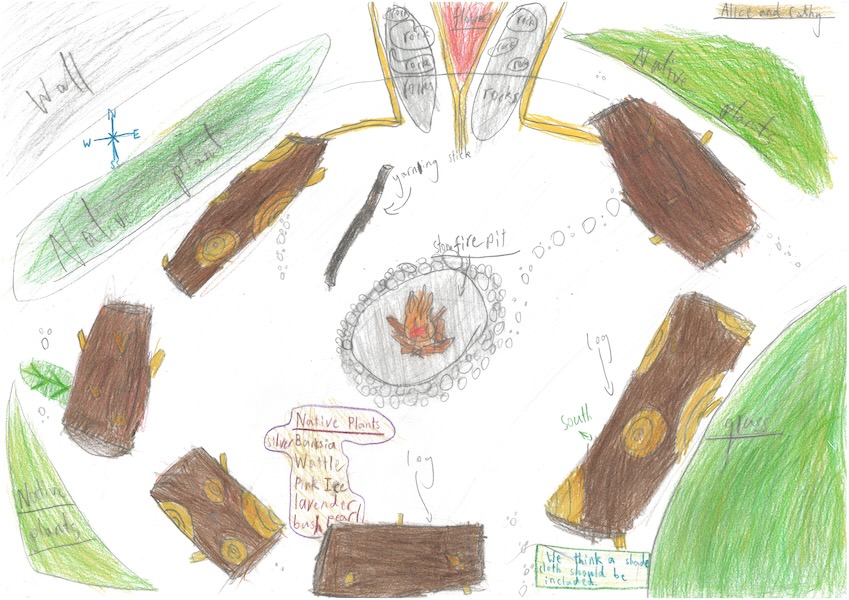
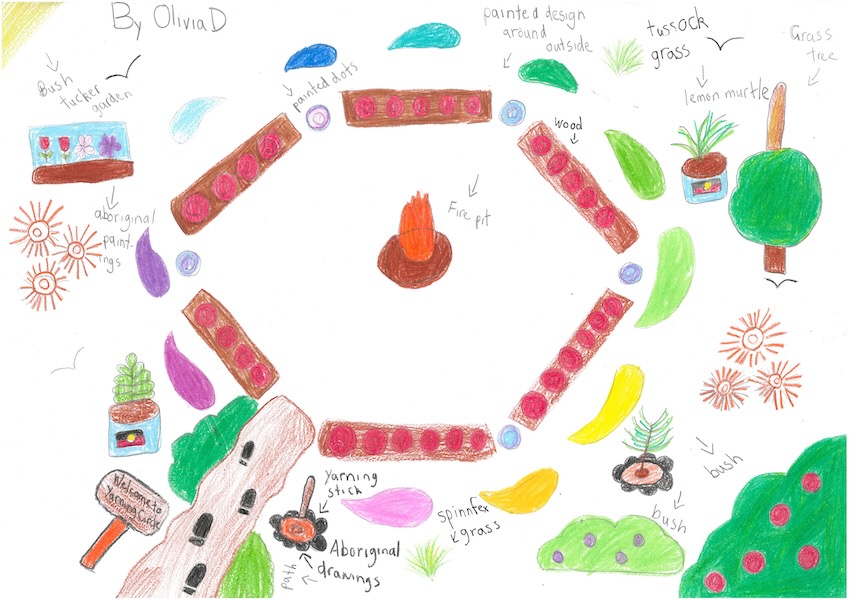
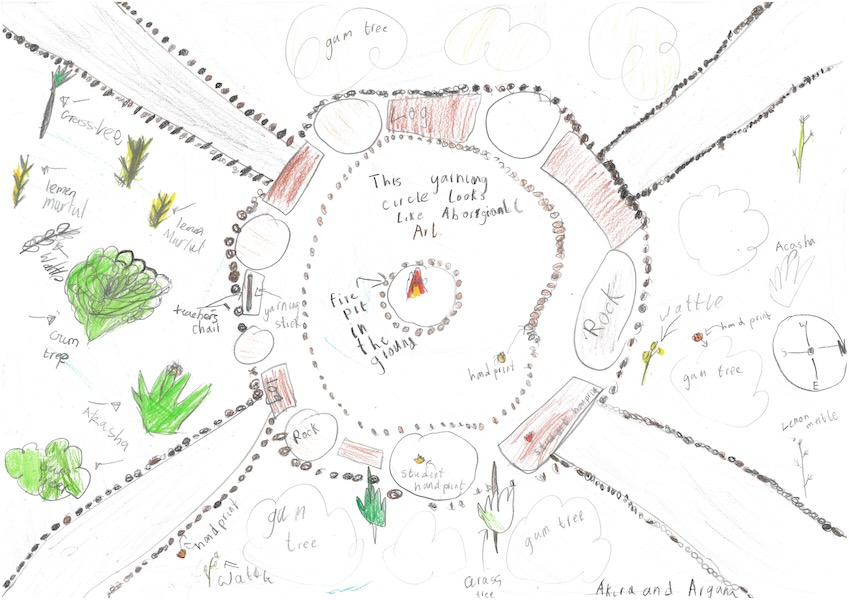
To celebrate the end of our Inquiry unit on ecosystems and lifecycles, Year 4 held an Inquiry Expo about endangered Australian animals. We had visiting students from Year 1 to Year 6, who engaged with our students’ stalls, which included dioramas, information reports, Kahoots and more!
“I loved the experience and it was so fun to make” – Aanya
“The Inquiry expo was really fun and I really enjoyed meeting other grades”- C.C.
“The expo was a really fun and engaging chance to learn and also meet other people” – Lucy
May Ou
Term 3 – Year 4 Classroom Teacher
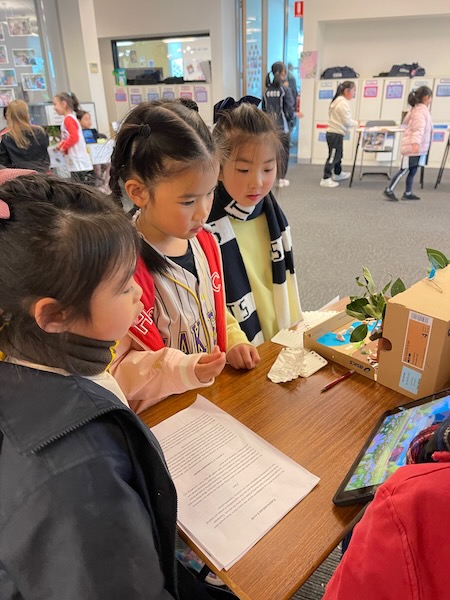

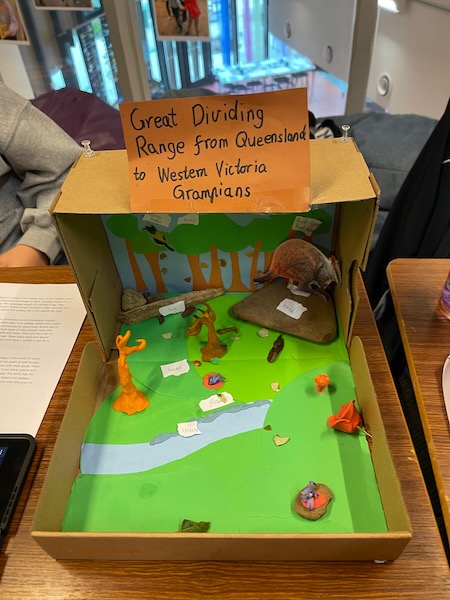
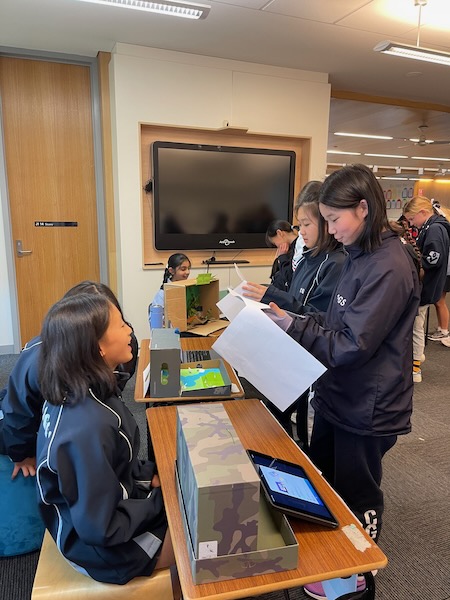
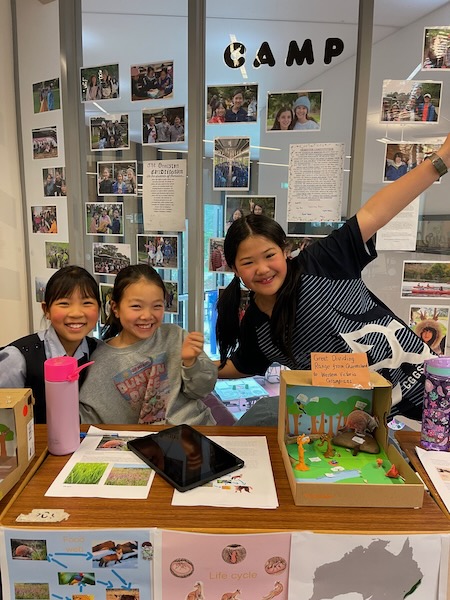
“We acknowledge and pay respect to the Wurundjeri people as the traditional custodians of the land on which the school is situated.”
Secondary School / Administration
2 Torrington Street, Canterbury
Victoria 3126 Australia
T +61 3 9813 1166
F +61 3 9882 9248
camgram@cggs.vic.edu.au
Junior School / Ormiston
